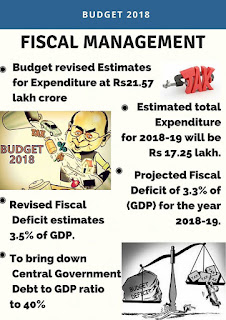Rich God, Poor Man
As inhabitants of the subcontinent of India, we certainly cannot dismiss the fact that we live in a highly religion-oriented country. There is religion in politics, government, jobs and even in the days of the week!
The 21st century is a very confusing and complicated era. While some people realize the importance of not wasting resources on stone structures, some still endeavor to organize the biggest (and the loudest) pandal in their neighborhood. With a population of over a billion religious people, the resources spent on religious practices inadvertently have a mammoth impact on the economy of the country. Now the question arises, are the resources being put to good use like helping contribute to the economy or are they just being wasted. The answer though is not that simple. There are two faces to the same coin.
How religious practices benefit the economy:
ASSOCHAM estimates that Ganesh Utsav generates business worth about Rs 20,000 crore annually across the country, particularly in Maharashtra and Telangana. Hyderabad alone generates business worth about Rs 5,000 crore in a nine-day Ganesh Chaturthi festival and provides employment to more than 20,000 families throughout the year, especially during the peak season of Ganesh festival (July-September). Durga Puja also generates business worth about 40,000 crore for the country. The size of the Durga Puja economy equals almost a third of West Bengal’s annual budget. During the nine day Puja, the food and beverages alone generate 50-60 crore rupees worth of business.
These large scale festivals are the sole livelihood of many workers of the unorganized sector and they depend on this annual income to feed their families for the rest of the year.
How religious practices are a sheer waste of resources:
While large scale organized celebration of festivals like Ganesh Chaturthi and Durga Puja produce a healthy dose of employment in this country, there is a steady outflow of resources like food, clothes, candles etc. that are daily offered in temples, churches and mosques in the name of religion.
In a country that has been ranked the most malnourished country by the World Bank, it is hard to imagine how crores and crores worth of useful resources are wasted on mere stone idols. Malnourishment, apart from being a social evil,also leads to major underutilization of the country’s manpower, human resource and economic potential. While 30% of India’s poor live on Rs 32 per day in villages and Rs 47 in cities, with no water, nutritious food or clothes worth the name to cover their bodies, the gods in over 16 religious shrines in India have an income which runs well into the crores. They live and travel in silver and gold bedecked sanctums and chariots, are dressed in the finest clothes and jewelry. During Mahashivratri, tonnes and tonnes of milk is just poured over the Shiva idol and down the drain when beggars outside the temple have seemingly not tasted milk in years. A print release by the government in February, 2016 suggests, “India ranks first in milk production, accounting for 18.5 percent of world production, achieving an annual output of 146.3 million tonnes during 2014-15.” But what is the point of producing so much milk if it doesn’t end up in somebody’s stomach? Milk is a vital source of carbohydrates, proteins, vitamin B12, calcium and fats. A single metric tonne is sufficient to feed 4,000 people. Though there isn’t a confirmed statistic on the number of tonnes of milk wasted annually in the name of Mahashivratri, the fact that there are thousands of temples indicates that the wastage is beyond a single metric tonne. Now you estimate how many malnourished children can be fed with this amount.
Resolving malnutrition is not just about feeding the poor. It’s about giving them hope to live. Only when there is food in his stomach to sustain him will he get the incentive to work and earn a livelihood for himself, thus contributing to the economy of the country. Where 92% of deaths are a result of hunger prevailing under normal and even ‘celebratory’ circumstances of the land of festivals and only eight percent die of hunger as a result of natural calamities, there is only one way the economy will progress in, and something tells me it won’t be up.
What should be done?
The only solution to this issue is to find a middle path. The large scale festivals like Durga Puja need to be encouraged as they generate unmatchable income in a relatively short period of time and inspite of being annual events are adequate to feed many families for an entire year.
Howevee regular wastage of useful resources needs to be immediately curbed. Your milkman wouldn’t care if you use the milk to wet the drain or to feed a malnourished body as long as their transactions are taking place and the income isn’t threatened. But it will have a profound effect on determining which way the economy of this great developing nation will develop.
The gurudwaras of the country have shown that religious sentiment and practical help can not only go hand in hand, but work very extremely well together. By serving millions of free meals with the help of volunteers and previously helpless employees, the gurudwaras have created a system that fuels the economy by providing employment and does charity in its most pure form, while uplifting the religious sentiment that we as a country are so proud of. And that, is the way to go.
Written by: Urvi Bhatia, Year I


Comments
Post a Comment